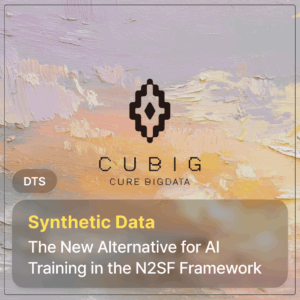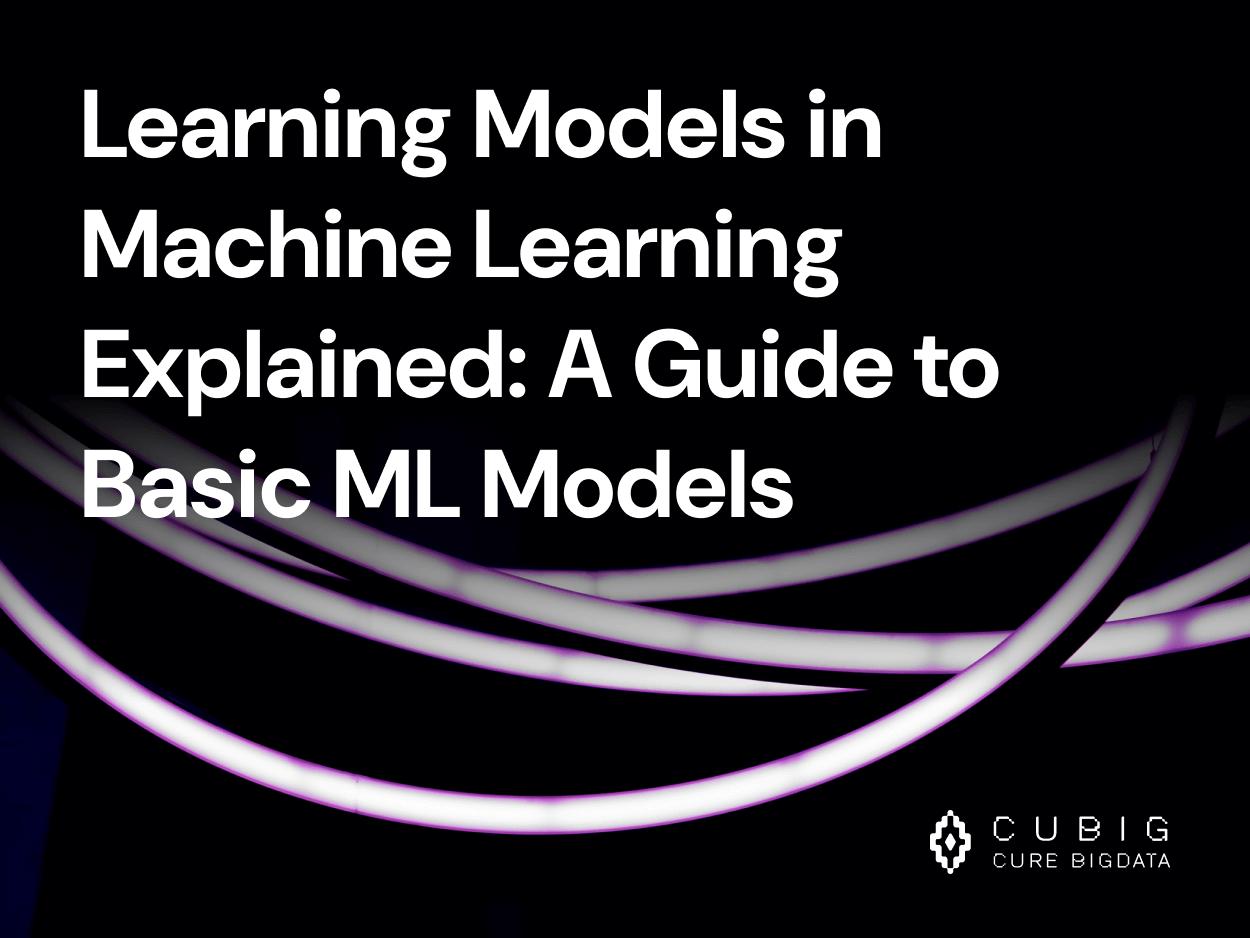Learning Models in Machine Learning Explained: A Guide to Basic ML Models
Table of Contents
What Are Learning Models in Machine Learning?
Definition and Importance in AI Systems
Learning models in machine learning are mathematical frameworks that map input data to outcomes through a process of learning patterns from examples. These models are essential to artificial intelligence (AI) systems because they enable automated decision-making, predictions, and data-driven optimization without explicit programming. The choice and design of a learning model directly affect an AI system’s performance, accuracy, and interpretability. They form the backbone of tasks such as image classification, recommendation systems, natural language understanding, and predictive maintenance. By iteratively adjusting parameters based on data, learning models can adapt to complex patterns and perform tasks that were previously only solvable by human intelligence. As data availability and computational resources grow, learning models are becoming more scalable, flexible, and integrated into everyday technologies.
Types of Learning Models: An Overview
Basic Machine Learning Models Explained
Basic machine learning models include algorithms that learn from data to make predictions or detect patterns. These foundational models include linear regression, which predicts continuous values based on input features, and logistic regression, which is used for binary or multiclass classification tasks. K-means clustering is another core method used in unsupervised learning to group similar data points together. These basic models are not only efficient and easy to interpret but also serve as building blocks for more complex methods. Their simplicity makes them excellent tools for benchmarking and establishing performance baselines in various domains such as customer analytics, risk modeling, and process optimization.
Supervised Learning Models
Supervised learning models are trained on labeled data, where both inputs and corresponding outputs are known. Examples include support vector machines (SVMs), decision trees, random forests, and gradient boosting machines like XGBoost. These models aim to learn the mapping between input variables (features) and the output (label), minimizing prediction error through iterative training. Supervised models are widely used in fields like medical diagnosis, credit scoring, email spam detection, and product recommendation. Their effectiveness depends on the quality and quantity of labeled data, making data annotation a critical step. Advanced variations such as ensemble learning and model stacking have enhanced performance in competitive machine learning tasks.
Unsupervised Learning Models
Unsupervised models operate without labeled outcomes. Instead of predicting specific values, they aim to discover hidden structures within the data. Common unsupervised learning techniques include clustering (e.g., K-means, DBSCAN), dimensionality reduction (e.g., PCA, t-SNE), and association rule learning. These models are instrumental in applications such as customer segmentation, anomaly detection, and exploratory data analysis. They are also used to preprocess data for other models, for example by reducing the feature space or identifying noise. Because there are no ground-truth labels, evaluating unsupervised learning results often relies on domain knowledge, visual inspection, or statistical heuristics.
Semi-Supervised Learning Models
Semi-supervised learning models combine a small amount of labeled data with a large amount of unlabeled data during training. This hybrid approach leverages the availability of unlabeled data to enhance learning efficiency and accuracy. Techniques such as self-training, co-training, and consistency regularization help the model generalize better with fewer labeled samples. Semi-supervised learning is especially beneficial in domains where labeling is expensive, time-consuming, or requires expert input, such as medical diagnostics, legal text analysis, and cybersecurity. It strikes a practical balance between the efficiency of unsupervised learning and the accuracy of supervised methods.
Reinforcement Learning Models
Reinforcement learning (RL) models learn optimal strategies through interaction with an environment. These models receive feedback in the form of rewards or penalties based on their actions, guiding future behavior. Key algorithms include Q-learning, deep Q-networks (DQN), and policy gradient methods such as REINFORCE and Proximal Policy Optimization (PPO). RL is particularly effective for sequential decision-making problems, such as robotic control, inventory management, autonomous vehicles, and game playing (e.g., AlphaGo). Unlike supervised learning, RL does not require labeled input-output pairs but instead depends on the design of reward functions and exploration strategies. Challenges in RL include sample inefficiency, delayed rewards, and the need for stable and reproducible training environments.
Key Concepts Behind Machine Learning Models
Model Training and Inference
Training involves feeding data into the model to adjust its internal parameters. During this process, the model learns patterns and relationships by minimizing a loss function that quantifies prediction errors. Common training techniques include gradient descent, backpropagation (in neural networks), and optimization through iterative algorithms. Inference is the model’s ability to apply what it has learned to new, unseen data and generate predictions or classifications. Successful machine learning requires a careful balance between these two phases: ensuring the model learns enough to make accurate predictions without memorizing the training data. This distinction is critical in real-world deployments, where models must generalize to diverse inputs across time and environments.
Overfitting vs Underfitting
Overfitting occurs when a model captures not only the underlying pattern in the training data but also the noise and random fluctuations. This results in high performance on training data but poor accuracy on new data. Underfitting happens when a model is too simple to capture the complexity of the data, resulting in poor performance even on the training set. Techniques to address overfitting include cross-validation, regularization (e.g., L1/L2 penalties), pruning in decision trees, and early stopping in neural networks. Addressing underfitting often involves increasing model complexity, adding more features, or training for longer. Striking the right balance ensures that a model is neither too rigid nor too flexible, achieving optimal generalization.
Bias-Variance Tradeoff
This tradeoff describes how model error can be decomposed into two components: bias and variance. Bias refers to the error introduced by approximating a complex problem with a simplified model. Variance refers to the model’s sensitivity to fluctuations in the training data. High bias models (e.g., linear models on nonlinear data) tend to miss patterns, while high variance models (e.g., deep trees or high-degree polynomials) react excessively to training data specifics. The ideal model minimizes both, providing a balance that generalizes well to unseen data. Strategies to manage this tradeoff include selecting appropriate algorithms, tuning hyperparameters, and using ensemble methods that combine models to reduce error from both bias and variance.
Popular Machine Learning Algorithms and Their Use Cases
Linear Regression and Logistic Regression
Linear regression predicts continuous outcomes using one or more input features by fitting a straight line to the data. It assumes a linear relationship between inputs and outputs and is easy to implement and interpret. Logistic regression, on the other hand, is used for binary or multiclass classification problems, modeling the probability of class membership using a sigmoid function. Both models are widely applied in finance for credit scoring, in real estate for property valuation, and in healthcare for predicting patient risk levels. Due to their simplicity and interpretability, they are often the first choice for baseline modeling and hypothesis testing in business analytics.
Decision Trees and Random Forests
Decision trees partition data by asking a sequence of questions based on feature values, creating a flowchart-like model that is easy to interpret. They are prone to overfitting but are useful for discovering decision rules. Random forests overcome this by combining multiple decision trees trained on different subsets of data and features, aggregating their outputs to improve accuracy and reduce variance. These models are commonly used in customer churn prediction, fraud detection, loan approval, and medical diagnostics. Their ability to handle mixed data types and rank feature importance makes them valuable in exploratory analysis and feature selection.
Support Vector Machines (SVM)
Support Vector Machines are classification algorithms that find the optimal hyperplane separating different classes in a dataset. They are effective for both linearly separable and non-linear data when combined with kernel functions. SVMs are especially powerful in high-dimensional spaces and are less affected by the curse of dimensionality. They have been widely used in applications such as spam detection, face recognition, and bioinformatics. Although training can be computationally intensive for large datasets, their high accuracy in complex decision boundaries makes them suitable for precision-critical tasks.
Neural Networks and Deep Learning Models
Neural networks consist of layers of interconnected units or neurons that transform input data through learned weights and activation functions. Deep learning models extend this architecture with many hidden layers, enabling the learning of hierarchical representations of data. These models have revolutionized fields like image classification, natural language processing, speech synthesis, and autonomous systems. Examples include convolutional neural networks (CNNs) for image tasks and recurrent neural networks (RNNs) for sequential data. Despite their high data and resource requirements, they achieve state-of-the-art performance in complex pattern recognition tasks and continue to evolve through innovations like transformers and attention mechanisms.
Clustering Algorithms: K-Means, DBSCAN
Clustering algorithms group data points based on similarity without predefined labels. K-Means divides data into K clusters by minimizing the distance between points and cluster centroids. It is fast and scalable but sensitive to outliers and initial conditions. DBSCAN (Density-Based Spatial Clustering of Applications with Noise) identifies clusters based on dense regions and can discover arbitrarily shaped clusters while handling noise effectively. These algorithms are commonly used in customer segmentation, document clustering, and anomaly detection. They help uncover natural groupings in data and are often used for exploratory analysis in marketing, social sciences, and sensor data monitoring.
How to Choose the Right Machine Learning Model
Understand Your Data
The size, type, and quality of your data influence model selection. Clean, well-labeled, structured data is suited for supervised models, while noisy or unlabeled data may require unsupervised or semi-supervised methods. Feature types (categorical vs numerical), class imbalance, and the presence of missing values also impact the choice. In cases where data is high-dimensional or sparse, dimensionality reduction techniques or regularization may be necessary before selecting a model. A clear understanding of the data distribution, variability, and anomalies is foundational to informed model selection.
Consider the Business Problem
Classification, regression, clustering, or ranking—each type of business problem aligns with different learning models. Clarity on the end goal, such as whether the objective is to predict outcomes, group users, or detect anomalies, helps narrow down model choices early in the project lifecycle. For example, churn prediction typically aligns with classification, while demand forecasting is best suited for regression. In addition, some problems may require interpretability, while others prioritize predictive accuracy. Understanding domain-specific constraints and expected outcomes will guide better alignment between problem requirements and model capabilities.
Evaluate Model Performance Metrics
Accuracy, precision, recall, F1-score, and ROC-AUC are key metrics for classification. RMSE (Root Mean Square Error), MAE (Mean Absolute Error), and R-squared are commonly used for regression tasks. In clustering, silhouette score and Davies–Bouldin index may apply. The appropriate metric depends on the business context. For instance, in fraud detection, recall might be more critical than accuracy to ensure most fraudulent cases are caught. Evaluating models using cross-validation and monitoring performance across multiple metrics ensures balanced and robust model evaluation that aligns with business goals.
Balance Accuracy, Interpretability, and Scalability
Highly accurate models like deep neural networks can be difficult to interpret. For regulatory environments or stakeholder-facing applications, simpler models such as decision trees or linear regression may be preferred. Additionally, not all models scale efficiently with growing datasets. Algorithms like random forests and XGBoost scale better than SVMs or k-NN for large datasets. Trade-offs between accuracy, interpretability, training time, and inference latency must be weighed. Tools like SHAP and LIME help interpret complex models, but simplicity is often advantageous when transparency is a business requirement.
Implementing ML Models with Synthetic Data: Azoo AI’s Approach
Azoo possesses a state-of-the-art proprietary algorithm capable of generating synthetic data that is up to 99% similar to the original—without accessing the original data. By removing sensitive information such as personal data from the original source, Azoo enables enterprises to perform high-performance machine learning on high-quality synthetic data.
Advanced Learning Models in AI Systems
Ensemble Models: Bagging and Boosting
Ensemble methods combine multiple models to enhance predictive performance. Bagging methods, like random forests, train individual models on bootstrapped subsets of the data and average their predictions to reduce variance. Boosting methods, such as XGBoost, LightGBM, and AdaBoost, sequentially train models where each focuses on correcting errors made by the previous ones, reducing bias. These techniques are widely used in structured data problems, competitions (e.g., Kaggle), and production-grade applications due to their robustness and generalization capability. Their ability to rank feature importance also supports interpretability and feature engineering workflows.
Transfer Learning and Pre-trained Models
Transfer learning leverages knowledge from models trained on large, general-purpose datasets and adapts them to specific, often smaller, tasks. It significantly reduces training time and data requirements, making it useful in domains with limited labeled data. In computer vision, models like ResNet or EfficientNet are fine-tuned for medical imaging, while in NLP, BERT or GPT models are adapted for customer service chatbots or sentiment analysis. Transfer learning democratizes access to high-performing models and accelerates deployment across domains by minimizing the cost of training from scratch.
Self-Supervised and Foundation Models
Self-supervised learning creates pseudo-labels from data itself by designing pretext tasks—like predicting missing words or image patches—to learn useful representations without manual annotation. This approach enables models to learn from vast amounts of unlabeled data, which is especially valuable for domains with scarce labeled examples. Foundation models, such as GPT, PaLM, or CLIP, are trained on diverse and massive datasets and can be fine-tuned or prompted for downstream tasks. These models are transforming how AI systems are built, enabling general-purpose capabilities with minimal task-specific training and offering a powerful base for multimodal and multilingual applications.
Common Challenges in Applying ML Models
Data Quality and Labeling
ML model performance is directly tied to data quality. Incomplete, inconsistent, or biased data leads to poor generalization and unreliable predictions. Ensuring high-quality data involves steps such as deduplication, normalization, handling of missing values, and consistent formatting. Labeling is equally critical—incorrect or inconsistent labels can mislead supervised learning models and degrade their performance. Manual labeling is often expensive and time-consuming, and automated tools may introduce systematic errors. Data validation and annotation tools, active learning strategies, and quality audits are essential components of maintaining high data quality for machine learning.
Computational Cost and Resources
Training complex models like deep neural networks can be resource-intensive, often requiring high-performance GPUs, significant memory, and long processing times. In production environments, these demands can become bottlenecks, especially when working with large datasets or retraining models frequently. Additionally, storing and transferring large volumes of data adds to infrastructure costs. Techniques such as model pruning, quantization, and the use of efficient architectures like MobileNet can help reduce these burdens. Organizations must also consider the trade-off between computational cost and accuracy when selecting and scaling machine learning solutions.
Model Interpretability and Trust
Business users and regulators often require transparency in how machine learning models make decisions. Black-box models, like deep neural networks, may offer high accuracy but are difficult to interpret. This lack of interpretability can reduce stakeholder confidence and hinder adoption in high-stakes environments such as healthcare or finance. Explainable AI (XAI) techniques, including SHAP (SHapley Additive exPlanations), LIME (Local Interpretable Model-agnostic Explanations), and attention visualization in neural networks, are increasingly used to improve model transparency. Incorporating interpretable models or hybrid systems that combine performance with explainability is key to fostering trust and compliance.
Bias and Ethical Considerations
Bias in training data—whether due to historical inequalities, underrepresentation, or flawed sampling—can propagate through models and lead to discriminatory or unfair outcomes. This is especially problematic in sectors such as hiring, lending, or law enforcement. Ethical AI development requires proactive steps, including fairness audits, diverse training datasets, and bias mitigation techniques like re-weighting or adversarial debiasing. In addition to technical interventions, organizations must establish governance frameworks and ethical guidelines to ensure responsible AI practices. Transparency in data sources, model behavior, and decision rationale supports fairness and accountability throughout the machine learning lifecycle.
How Azoo AI Solves Machine Learning Model Challenges
Azoo provides well-labeled and secure synthetic data ready for use. Its synthetic data retains the statistical properties of the original while excluding sensitive information, ensuring a high level of privacy protection. Moreover, Azoo can generate synthetic data in the desired quantity, addressing issues such as long-tail data scarcity and data imbalance—ultimately helping to reduce bias in training datasets.
FAQs
What are the basic machine learning models?
Basic machine learning models include linear regression, logistic regression, decision trees, support vector machines (SVMs), k-nearest neighbors (KNN), and neural networks. These models form the foundation for more advanced techniques and are selected based on the type of data and task.
How do I know which machine learning model to use?
Choosing a model depends on the problem type (classification, regression, clustering), dataset size, feature types, interpretability needs, and performance requirements. Experimenting with multiple models and validating with metrics like accuracy or F1 score is a common approach.
What is the difference between supervised and unsupervised learning?
Supervised learning uses labeled data to train models for prediction tasks like classification and regression. Unsupervised learning deals with unlabeled data to find patterns or groupings, such as in clustering or dimensionality reduction techniques.
Why use synthetic data to train ML models?
Synthetic data helps when real data is scarce, sensitive, or expensive to collect. It supports privacy, enables simulation of rare cases, and boosts training diversity, often improving model robustness and performance.
What makes Azoo AI’s synthetic data unique?
Azoo possesses non-access-based private synthetic data generation technology that enables high-performance AI analysis and training without accessing original data. It supports a wide range of data domains, including images, text, and tabular data. This allows companies across various industries to generate the data they need on their own within Azoo—while effectively bypassing security and regulatory challenges.
CUBIG's Service Line
Recommended Posts
-

Launching LLM Capsule for macOS: using generative AI at work while staying compliant with privacy regulations
-

Synthetic data AI training: a new path for public institutions in the N2SF era
-

Why Public Institutions Need DTS for Safe Data Opening & Utilization(feat. 2025 Public Data Provision & Data-Driven Administration Evaluation Guidelines)






